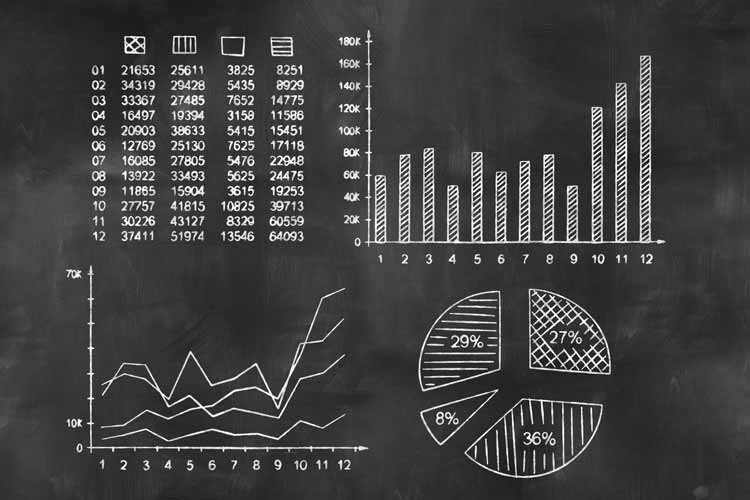
Recent action in VIX futures and the inverse volatility ETF suggest we may have hit an inflection point for the low-volatility regime
The post-election "life cycle" price pattern that's been on display for front-month CBOE Volatility Index (VIX) futures for December, January, and February appears to be experiencing a divergence in terms of how March front-month futures price action has thus far played out -- even as the upside bias to all-time highs in the equity indices appears intact.
This post-election VIX front-month futures price pattern was actually characteristic of a number of pre-November periods, and it can probably be described as a graphical depiction of the nightmare for holders of such instruments as iPath S&P 500 VIX Short-Term Futures ETN (VXX) and ProShares Ultra VIX Short-Term Futures ETF (UVXY) that perpetually buy in at peak contango, only to exit at contract lows.

The cycle begins with a total collapse in prices for the "old" front-month in the days ahead of its expiration -- as the futures meet their inevitable fate of losing their premium and converging to cash VIX. This is immediately followed by a very deceptive "upside pop" on the VIX front-month futures chart -- a pop that simply reflects the emergence of a new front-month that carries its own contango. But very soon after the new front-month is established, prices begin to head south (and ultimately experience a final collapse in the days ahead of "new" front-month expiration).
So we have the November VIX contract plunging on Nov. 15 to close at 13.20 and the new December contract peaking the next day at 15.80 -- only to ultimately close on Dec. 20 down at 11.58. The new January contract managed to rally from a low of 14.00 on Dec. 21 to peak at 15.35 on Dec. 30 (though I'd suggest this was a year-end phenomenon), but January then traded as low as 11.75 at expiration on Jan. 17. February front-month peaked at 14.50 on its second day of trading (Jan. 19), but then crashed to as low as 11.05 at expiration on Feb. 14 (a 52-week VIX futures low -- and, in fact, I have to go back to February 2007 on the monthly VIX futures chart to find a price below 11.05).
But since March became the new front-month on Feb. 15 (and traded on that day as low as 12.25), this pattern has differed. In fact, March VIX futures lows on that first front-month trading day hugely begged the following question: "How can it make sense to be shorting
March VIX futures -- with roughly a month to run until the contract expires -- at levels as low as 12.25? Even if you are hugely bullish on equities and/or hugely bearish on volatility? Because you are ALREADY shorting March near the life-cycle lows of many months past, even as you are accepting all manner of upside risk in the form of all the 'unknown unknowns' over the next month."
So on Feb. 15 -- an argument could be made that a
low-volatility extreme of some sort had been created by the combination of (a) the low at 11.05 in the expiring February contract and (b) the low at 12.25 set the next trading day in the new front-month March contract.
Over the course of the five trading days that have followed, March VIX futures have displayed a steady upside bias, with Thursday's peak at 13.75 taking out the spike high at 13.70 on Feb. 16. But the action in cash VIX from Feb. 15 to date has been very much sideways, and it is notable that Thursday's cash VIX high of 12.46 was 0.40 point below its Feb. 16 peak. So perhaps this March front-month futures action can best be described as a slow accumulation of futures premium over cash VIX. And perhaps this can also quite logically explain the "Move along, nothing to see here" non-reaction by the equity markets to this VIX futures strengthening.

I think whether or not this change in the front-month VIX futures equation has anything major in the way of negative fallout for equities depends on whether the February VIX futures crash into expiration to multi-year lows marked a major termination point for "low-side divergence" by a mean-reverting asset.
And this puts into focus the chart below of XIV and the fact that, over the past year, "short volatility" led all major asset classes in terms of the magnitude and the persistence of its upward price trend. But on a short-term basis:
- The XIV peak at $69.98 (on Feb. 15) fell shy of the $70.125 level corresponding to a 50% YTD (2017) gain.
- On Thursday's pullback, XIV took out support at $65.37 (double its Nov. 3 pre-election low).
- Per the chart below, Thursday's XIV close ($63.89) was right on its 20-day moving average ($63.93). The last XIV close below its 20-day was on Dec. 30.
- The next support level of significance appears to be $61.44 -- representing QUADRUPLE the Feb. 12, 2016 low.
- For some longer-term technical perspective, XIV's 40-week moving average currently stands at $41.17.
We seem to now be in very "interesting times" -- for discerning whether we are experiencing an inflection point in the "low volatility, and it only moves lower" scenario, and whether a "yes" to that possibility will negatively impact in any meaningful way the immovable force of the post-election equities rally.


Get Bernie Schaeffer's latest stock market insights direct to your inbox, every Sunday morning, with our free Chart of the Week newsletter.